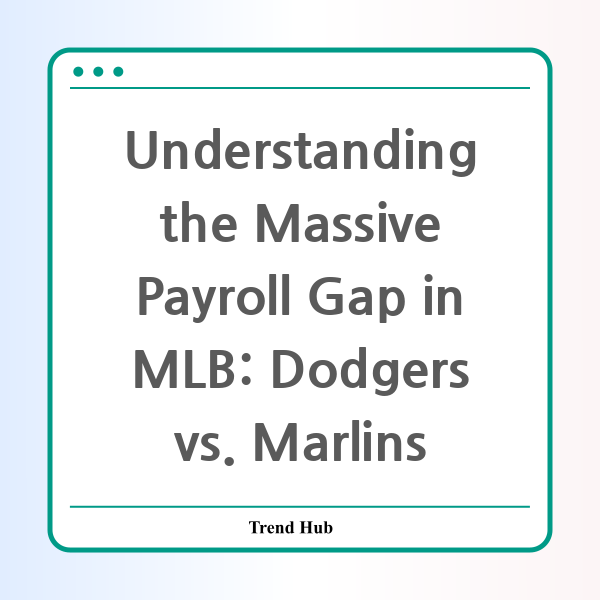* This website participates in the Amazon Affiliate Program and earns from qualifying purchases.

Have you ever wondered how some MLB teams can spend hundreds of millions on their rosters while others operate on a shoestring budget? The disparity in Major League Baseball (MLB) payrolls is more stark now than ever, highlighted by the recent matchup between the $476 million Los Angeles Dodgers and the $69 million Miami Marlins. This jaw-dropping $407.6 million gap brings to light issues surrounding financial equality, competitiveness, and the ongoing debate over the future of salary caps in the sport.
As we dive into this topic, it’s essential to recognize that the Dodgers and Marlins are at opposite ends of the financial spectrum in MLB. The Dodgers, with their massive payroll, are considered a powerhouse, while the Marlins struggle to fill their stadium with fans. In April 2025, the Marlins faced a difficult reality when they played before an announced crowd of just 7,646 against the Cincinnati Reds, a far cry from the sold-out atmosphere at Dodger Stadium, which has hosted over 50,000 fans regularly.
The payroll gap in MLB is not just a numerical statistic; it affects the competitive balance of the league as well. The Marlins have consistently ranked in the bottom tier of MLB attendance for over a decade, which limits their revenue opportunities and restricts their ability to invest in high-caliber players. Fans like Luis Diaz and John Hewitt express frustration at the owners of low-revenue teams like the Marlins, suggesting that the team's financial strategy needs to change to attract more fans and talented players.
This year, the gap between the highest and lowest payroll is unprecedented. Looking back to 2002, when the Oakland Athletics executive Billy Beane commented on the financial struggles against teams like the New York Yankees, the difference was about $85 million. Now, as the Dodgers prepare to face the Marlins, we are witnessing a divide that has become a chasm, raising questions about the future structure of MLB's financial landscape.
The imbalance is compounded by the recent collective bargaining agreements and negotiations surrounding the desire for a salary cap. As we approach the expiration of the current agreement next season, discussions will likely intensify regarding how smaller-market teams like the Marlins can compete more evenly with top spenders like the Dodgers. A potential salary cap model could force teams like the Marlins to invest more while placing limits on high-spending teams.
In a landscape where teams like the Dodgers spent $450 million to ensure their competitiveness, other teams are left scrambling. The Marlins, unable to secure high-profile players, have focused on developing their roster through trades and minor-league improvements. Owner Bruce Sherman has stated that their approach revolves around sustainability, with investments in training facilities and player development taking precedence over immediate big-league spending.
However, the lack of spending has its consequences. The Dodgers' success, including their recent World Series victory, is directly tied to their willingness to invest significantly in their roster. Moreover, historical trends show that teams with top payrolls often dominate the postseason, leaving lower-budget teams like the Marlins yearning for respectability in a league that rewards financial prowess.
As the baseball season progresses, it’s crucial for fans and analysts alike to keep an eye on how these financial disparities impact the league's dynamics, player movement, and the overall health of MLB. The solution to these challenges may lie in restructuring the financial frameworks of the league, but until that happens, teams like the Marlins will need to find innovative ways to build competitive rosters with limited resources.
In conclusion, the stark contrast between teams like the Dodgers and Marlins serves as a reminder of the ongoing issues of financial inequality within MLB. The need for a more balanced competitive environment is pressing, and as negotiations for future agreements unfold, it will be fascinating to see if changes can bridge the massive payroll gap that currently defines the league.
* This website participates in the Amazon Affiliate Program and earns from qualifying purchases.